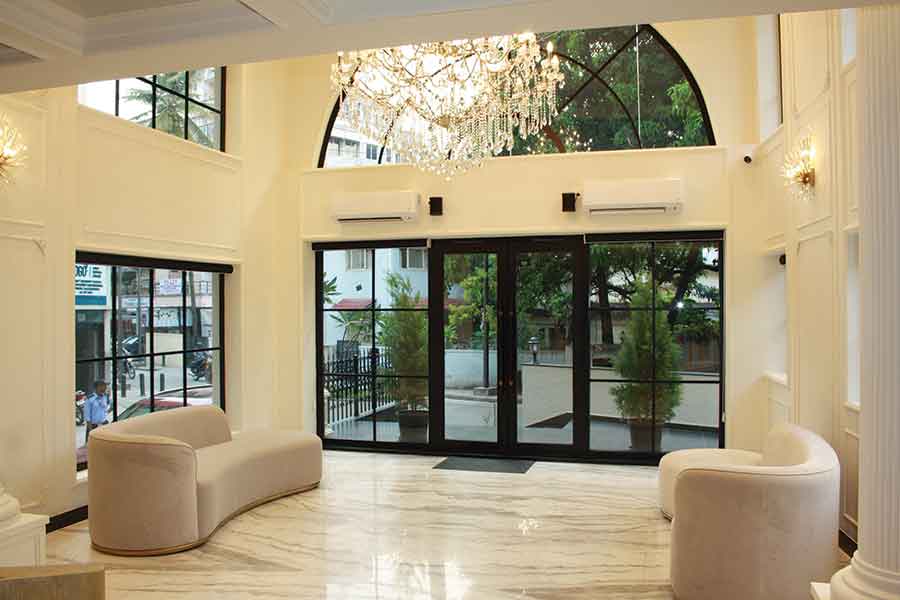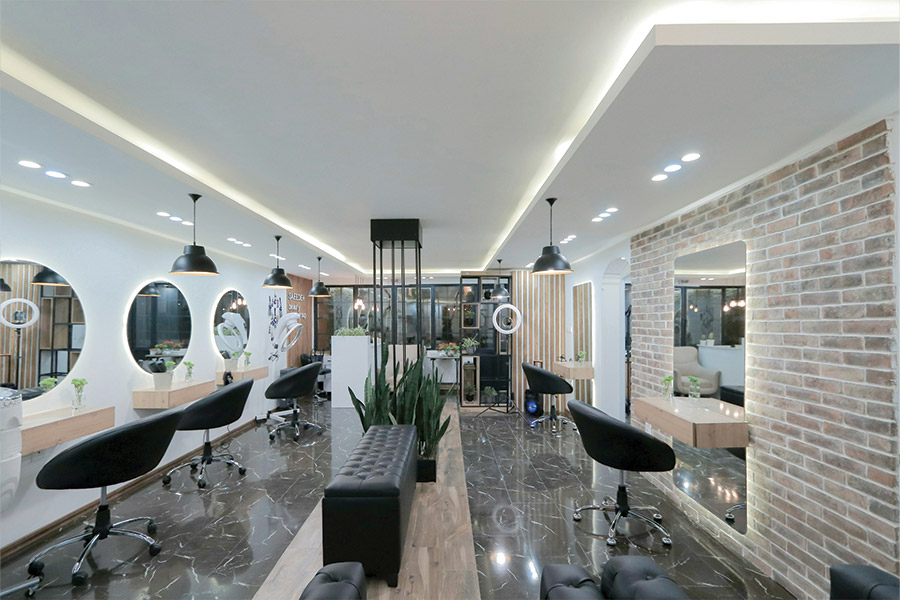Spa design is evolving to emphasize holistic wellness incorporating nature inspired elements, sustainable materials and advanced technology.
Spa design is advancing to highlight comprehensive well-being, integrating elements inspired by nature, sustainable materials, and cutting-edge technology. This modern approach aims to create serene environments that not only promote relaxation but also enhance physical, mental, and emotional well-being. By integrating green practices and innovative solutions, spas strive to offer guests an immersive experience that fosters rejuvenation while minimizing environmental impact.

Nature Calling
There is a growing trend of spa experiences and treatment rooms being integrated into nature like treehouses, gardens, by the ocean or in the forest, simultaneously bringing more nature inside the spa.
 “Spas irrespective of big or small are implementing biophilic concepts. Designers are creating sustainable and eco-friendly spa as per the necessity of modern world. Owners nowadays are incorporating energy-efficient practices, utilizing eco-friendly products, supporting local community development initiatives, and promoting wellness through on-site gardens and natural elements,” says Amardeep Gulri, Founder & Principal Designer, Deco-Arte.
“Spas irrespective of big or small are implementing biophilic concepts. Designers are creating sustainable and eco-friendly spa as per the necessity of modern world. Owners nowadays are incorporating energy-efficient practices, utilizing eco-friendly products, supporting local community development initiatives, and promoting wellness through on-site gardens and natural elements,” says Amardeep Gulri, Founder & Principal Designer, Deco-Arte.
Roma Basumatary, Spa Manager, Raffles Udaipur, says, “The spa design landscape is evolving with an emphasis on hygiene, sensor technology, and space utilization. Moving forward, the focus is on creating an environment where clients can experience a sense of privacy, warmth, and safety, encouraging them to revisit spas repeatedly.”
Local Love
People have reduced their dependence on foreign and imported fabrics, artifacts, furniture, building materials, and equipment from overseas, instead using cost-effective, sustainable (where possible) building materials, sourcing art, handicrafts pottery, and equipment locally, crafted by local artisans, artist’s sculptures, weavers, and myriad of home-grown suppliers, thus reducing the companies carbon footprint.
 “In India, wellness centres strive to use only materials crafted by local women, maintaining traditional skills, and offering fair-trade prices and employment. Artwork sculptures, handicrafts, and even murals are often painted by local artisans, maintaining the traditions in which the spa is to operate. Spas and wellness centres strive to maintain a balance by using local materials and respecting traditions,” opines Colin Gary Hall, Founder, Spa Wallah.
“In India, wellness centres strive to use only materials crafted by local women, maintaining traditional skills, and offering fair-trade prices and employment. Artwork sculptures, handicrafts, and even murals are often painted by local artisans, maintaining the traditions in which the spa is to operate. Spas and wellness centres strive to maintain a balance by using local materials and respecting traditions,” opines Colin Gary Hall, Founder, Spa Wallah.
Material Matters
 Eco friendly and sustainable materials such as bamboo-reclaimed wood and natural stone are converted into antimicrobial surfaces, soundproofing fabrics, and basophilic elements. These are integrated to enhance the overall spa experience. Abish Radhakrishnan, Spa Manager, Conrad Spa, Conrad Bengaluru says, “Spas are increasingly designed to reflect the local culture
Eco friendly and sustainable materials such as bamboo-reclaimed wood and natural stone are converted into antimicrobial surfaces, soundproofing fabrics, and basophilic elements. These are integrated to enhance the overall spa experience. Abish Radhakrishnan, Spa Manager, Conrad Spa, Conrad Bengaluru says, “Spas are increasingly designed to reflect the local culture

Reclaimed wood from old structures is used to add a rustic touch, promoting material reuse and sustainable design. Recycled metals like copper and aluminium are utilised in light fixtures and decorative elements, aligning with eco-conscious spa interiors. Ceramic and porcelain tiles with eco-friendly certifications are chosen for flooring, while sustainable fabrics made from organic cotton or bamboo adorn ayurveda centre furnishings.
Tech Impetus
Contemporary spas are departing from conventional models, integrating comprehensive wellness elements that encompass physical, mental, and emotional health. Technology is integrated to enhance guest services, while flexible Ayurveda Centre accommodates diverse wellness activities.
 “Personalization is key, with spa designs tailored to individual preferences and experiences. The inclusion of art acts as a therapeutic element and a focus on creating serene atmospheres contribute to the overall well-being of guests. Additionally, the merging of traditional Ayurveda Centre services with medical and wellness offerings reflects a growing desire for a more comprehensive approach to health and beauty. In essence, Ayurveda Centre design is evolving to meet the dynamic needs of guests, offering a harmonious blend of tradition, innovation, and well-being,” says Abishek K Ramesh, Executive Director, Kairali Ayurvedic Group.
“Personalization is key, with spa designs tailored to individual preferences and experiences. The inclusion of art acts as a therapeutic element and a focus on creating serene atmospheres contribute to the overall well-being of guests. Additionally, the merging of traditional Ayurveda Centre services with medical and wellness offerings reflects a growing desire for a more comprehensive approach to health and beauty. In essence, Ayurveda Centre design is evolving to meet the dynamic needs of guests, offering a harmonious blend of tradition, innovation, and well-being,” says Abishek K Ramesh, Executive Director, Kairali Ayurvedic Group.
Similarly, integration of smart technology offers personalized experiences through digital wellness assessments, electronic booking systems, and smart controls for ambiance within treatment rooms.
Wellness First
Embracing biophilic design principles, spas are incorporating natural elements such as water and organic shapes to create serene environments that connect guests with nature. Innovative lighting solutions, including dynamic lighting systems contribute to the therapeutic atmosphere.
“The focus of spas has shifted from a narrow association with wealthy people and pampering to include all demographics; men, teens, children at high price-points. We have even seen spas partnering with medical professionals to offer services which aim to accomplish a more integrative lifestyle change. Spas are also striving to minimize waste through various practices such as using biodegradable products, implementing recycling,” says Ramesh.
To give guests a personalized experience, designs now focus on creating tranquil environments that promote relaxation, mental well-being, and health-conscious lifestyles.







